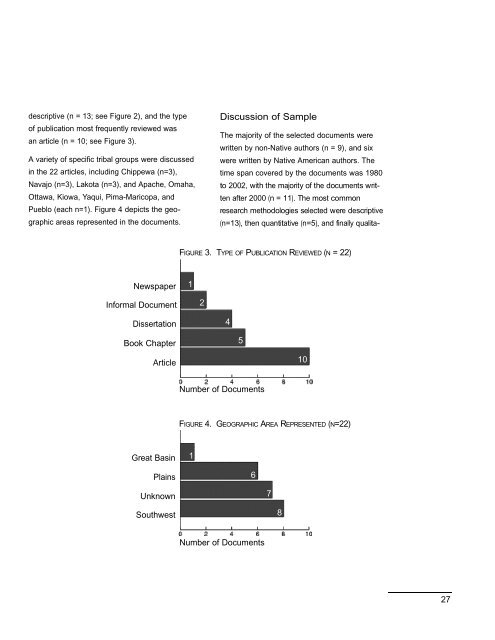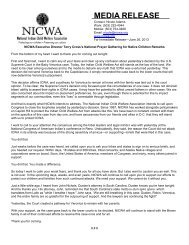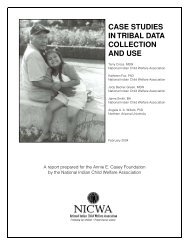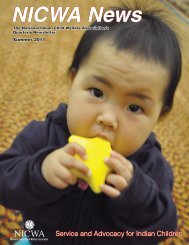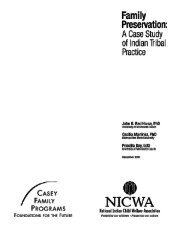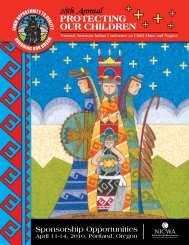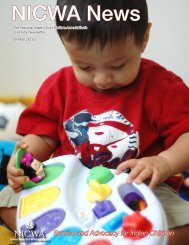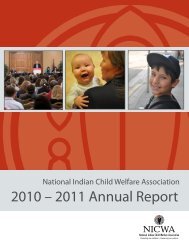Native American Children and Youth Well-Being Indicators
Native American Children and Youth Well-Being Indicators
Native American Children and Youth Well-Being Indicators
Create successful ePaper yourself
Turn your PDF publications into a flip-book with our unique Google optimized e-Paper software.
Discussion of SampleThe majority of the selected documents werewritten by non-<strong>Native</strong> authors (n = 9), <strong>and</strong> sixwere written by <strong>Native</strong> <strong>American</strong> authors. Thetime span covered by the documents was 1980to 2002, with the majority of the documents writtenafter 2000 (n = 11). The most commonre s e a rch methodologies selected were descriptive(n=13), then quantitative (n=5), <strong>and</strong> finally qualitadescriptive(n = 13; see Figure 2), <strong>and</strong> the typeof publication most frequently reviewed wasan article (n = 10; see Figure 3).A variety of specific tribal groups were discussedin the 22 articles, including Chippewa (n=3),Navajo (n=3), Lakota (n=3), <strong>and</strong> Apache, Omaha,Ottawa, Kiowa, Yaqui, Pima-Maricopa, <strong>and</strong>Pueblo (each n=1). Figure 4 depicts the geographicareas represented in the documents.FI G U R E3. TY P E O F PU B L I C AT I O NRE V I E W E D(N = 22)Newspaper1Informal Document2Dissertation4Book Chapter5Article10Number of DocumentsFI G U R E4. GE O G R A P H I CAR E A RE P R E S E N T E D(N= 2 2 )Great Basin1Plains6Unknown7Southwest8Number of Documents27


